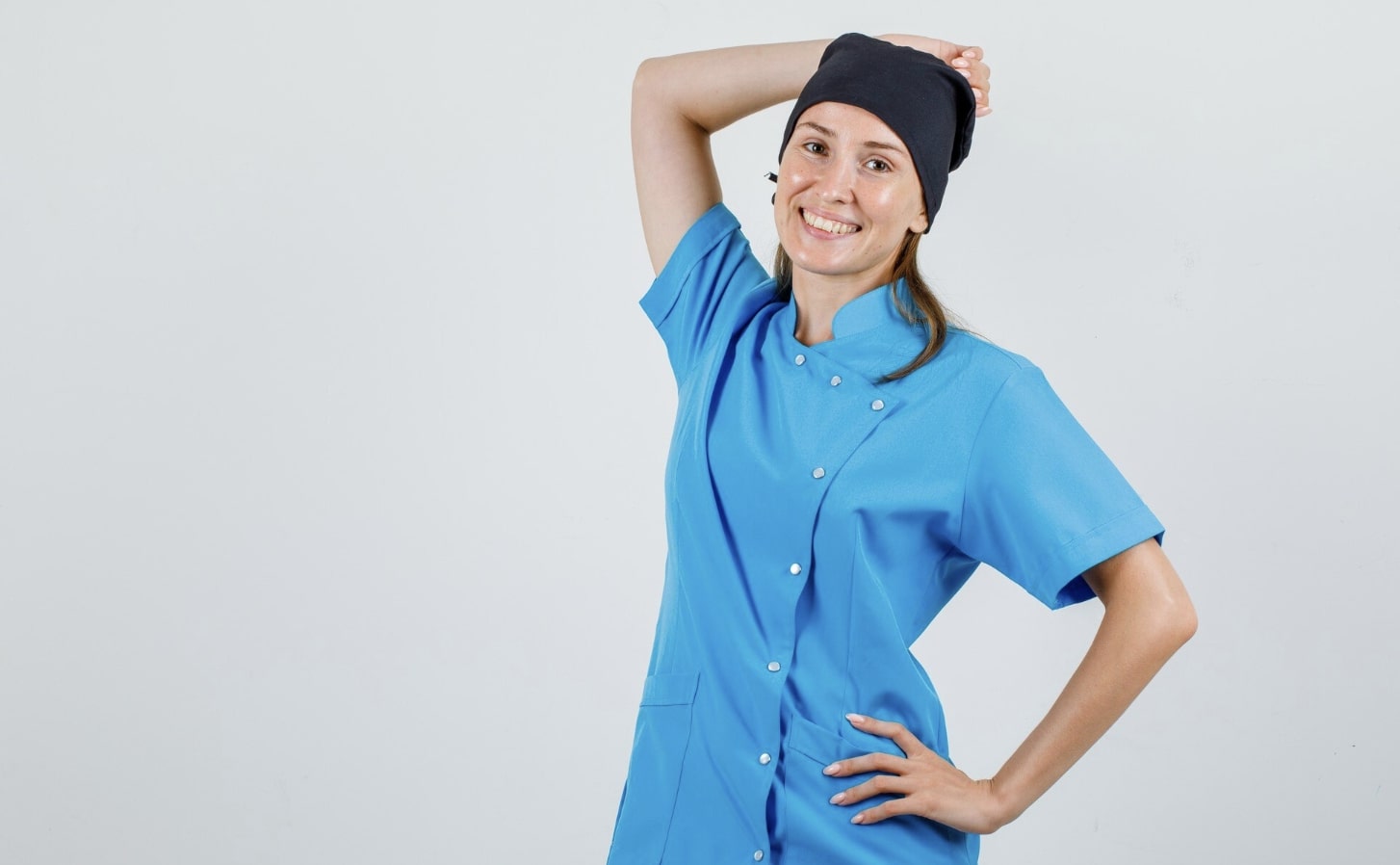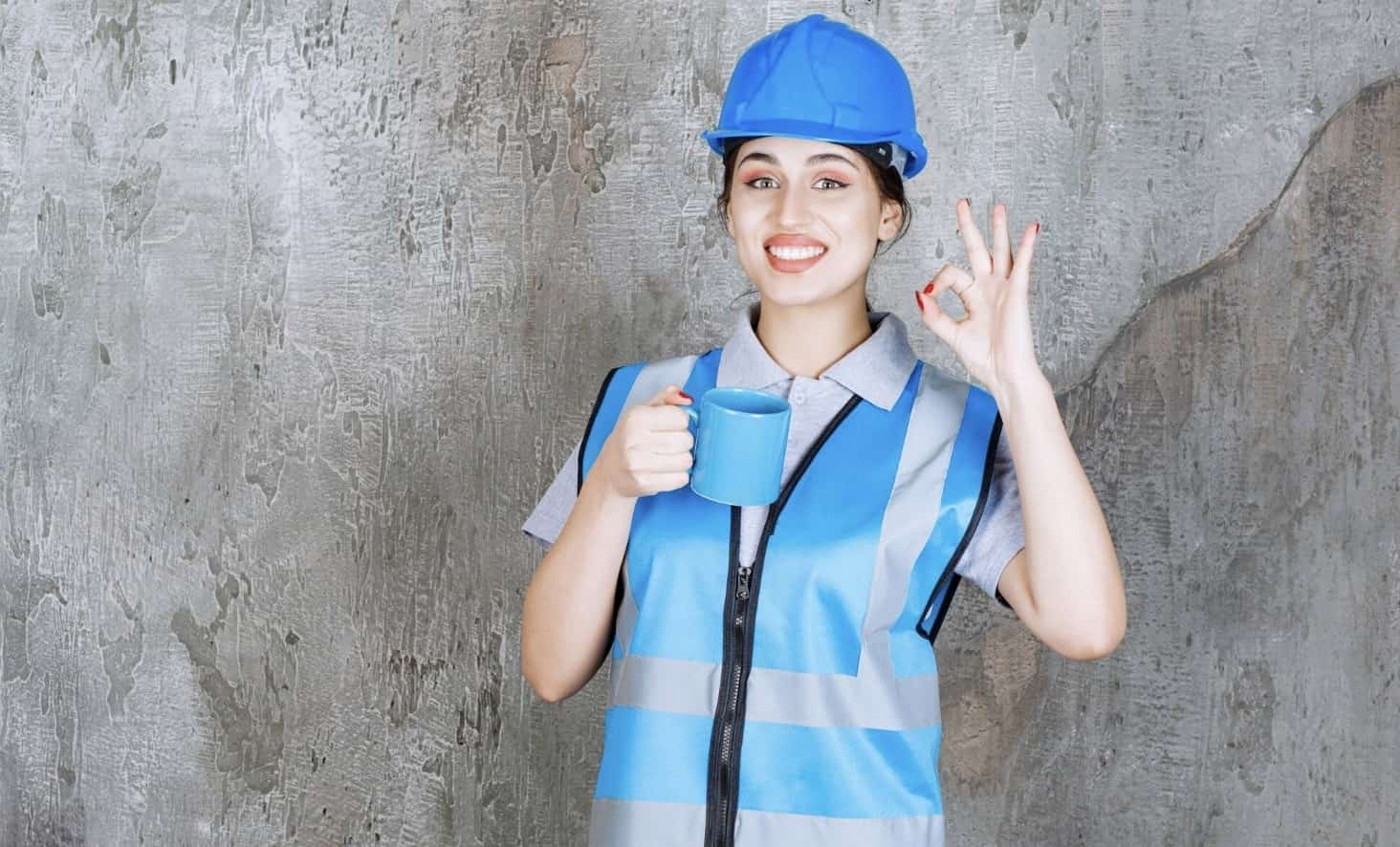Characteristics of Elegant and Comfortable Work Uniforms
The uniform is an essential part of a company's or facility's identity, reflecting professionalism and representing the organization to both clients and employees. At the same time, the uniform must meet employees' needs for comfort and practicality, which contributes to enhancing overall performance. In this article, we will discuss the characteristics of elegant and comfortable work uniforms, focusing on how to strike a balance between comfort and style.
1. High-Quality Materials
The materials used to make the uniform are one of the first factors that affect employee comfort. The fabrics should be comfortable, breathable, and able to absorb moisture. Moreover, the materials must be durable enough to withstand frequent use and washing without losing their quality or shape. Fabrics such as cotton, polyester, or blends containing synthetic fibers can be ideal options for this purpose

4. Practicality and Ease of Maintenance
In addition to style, a uniform that is easy to maintain is an important factor. It should be stain and wrinkle-resistant, helping employees maintain a neat appearance throughout the day. Ideally, the fabrics used should be easy to clean and washable without affecting their quality. It is also advisable to avoid adding complicated details or small parts that may complicate garment care.
5. Safety and Security
In some work environments, the uniform must be designed to ensure the employee's safety. For example, in environments dealing with heavy machinery or chemicals, fire-resistant materials or materials that protect from contamination should be used. These features may also include reflective safety strips that enhance visibility in low-light work environments.

Conclusion:
An elegant and comfortable uniform is a vital element in today's workplace, reflecting the organization's identity and enhancing its public image. Its good design combines both elegance and comfort, contributing to a work environment that is both comfortable and professional. By selecting the right materials and paying attention to details, a uniform can help employees perform their tasks efficiently and flexibly. Additionally, providing easy-to-maintain designs and maintaining a fresh appearance helps enhance employees' self-confidence. Moreover, the design should be flexible enough to suit different work environments and their conditions. Providing uniforms that are both comfortable and practical is not only for the employee's benefit but also to strengthen their loyalty and affiliation with the organization. Ultimately, an elegant and comfortable uniform is a long-term investment in improving work quality and the organizational environment.
2. Design for Movement
The uniform should be designed to allow freedom of movement for the employee while performing daily tasks. Adding features like comfortable cuts, adjustable buttons, and flexible fabrics contributes to greater comfort, especially in environments that require constant movement or physical labor. The fit should also take into account different body measurements to ensure complete comfort for the wearer.
3. Aesthetics and Style
The uniform design must align with the overall image of the organization, reflecting professionalism and corporate identity. Colors and fine details such as logos or reflective stripes play an important role in enhancing the general impression. An elegant uniform improves the employee's appearance and demonstrates the organization's commitment to quality. Elegance is not only about beauty but also about the proper coordination of colors and details that make the employee appear unified and professional.

6. Comfort in All Weather Conditions
The uniform must be suitable for various weather conditions. Whether working in hot or cold environments, the uniform should provide comfort to the wearer. In hot areas, it is important to choose lightweight fabrics that allow ventilation. In cold environments, the uniform must provide adequate insulation to maintain body temperature.
7. Cost-Effectiveness
In addition to the technical and design aspects, the uniform should be economical and offered at a reasonable cost without compromising on quality. Organizations often require large quantities of uniforms, so finding a balance between quality and cost is essential to maximize benefits. Choosing durable and suitable materials helps reduce the cost of replacement and maintenance.


2. Design for Movement
The uniform should be designed to allow freedom of movement for the employee while performing daily tasks. Adding features like comfortable cuts, adjustable buttons, and flexible fabrics contributes to greater comfort, especially in environments that require constant movement or physical labor. The fit should also take into account different body measurements to ensure complete comfort for the wearer.
3. Aesthetics and Style
The uniform design must align with the overall image of the organization, reflecting professionalism and corporate identity. Colors and fine details such as logos or reflective stripes play an important role in enhancing the general impression. An elegant uniform improves the employee's appearance and demonstrates the organization's commitment to quality. Elegance is not only about beauty but also about the proper coordination of colors and details that make the employee appear unified and professional.

4. Practicality and Ease of Maintenance
In addition to style, a uniform that is easy to maintain is an important factor. It should be stain and wrinkle-resistant, helping employees maintain a neat appearance throughout the day. Ideally, the fabrics used should be easy to clean and washable without affecting their quality. It is also advisable to avoid adding complicated details or small parts that may complicate garment care.
5. Safety and Security
In some work environments, the uniform must be designed to ensure the employee's safety. For example, in environments dealing with heavy machinery or chemicals, fire-resistant materials or materials that protect from contamination should be used. These features may also include reflective safety strips that enhance visibility in low-light work environments.

6. Comfort in All Weather Conditions
The uniform must be suitable for various weather conditions. Whether working in hot or cold environments, the uniform should provide comfort to the wearer. In hot areas, it is important to choose lightweight fabrics that allow ventilation. In cold environments, the uniform must provide adequate insulation to maintain body temperature.
7. Cost-Effectiveness
In addition to the technical and design aspects, the uniform should be economical and offered at a reasonable cost without compromising on quality. Organizations often require large quantities of uniforms, so finding a balance between quality and cost is essential to maximize benefits. Choosing durable and suitable materials helps reduce the cost of replacement and maintenance.

Conclusion:
An elegant and comfortable uniform is a vital element in today's workplace, reflecting the organization's identity and enhancing its public image. Its good design combines both elegance and comfort, contributing to a work environment that is both comfortable and professional. By selecting the right materials and paying attention to details, a uniform can help employees perform their tasks efficiently and flexibly. Additionally, providing easy-to-maintain designs and maintaining a fresh appearance helps enhance employees' self-confidence. Moreover, the design should be flexible enough to suit different work environments and their conditions. Providing uniforms that are both comfortable and practical is not only for the employee's benefit but also to strengthen their loyalty and affiliation with the organization. Ultimately, an elegant and comfortable uniform is a long-term investment in improving work quality and the organizational environment.
